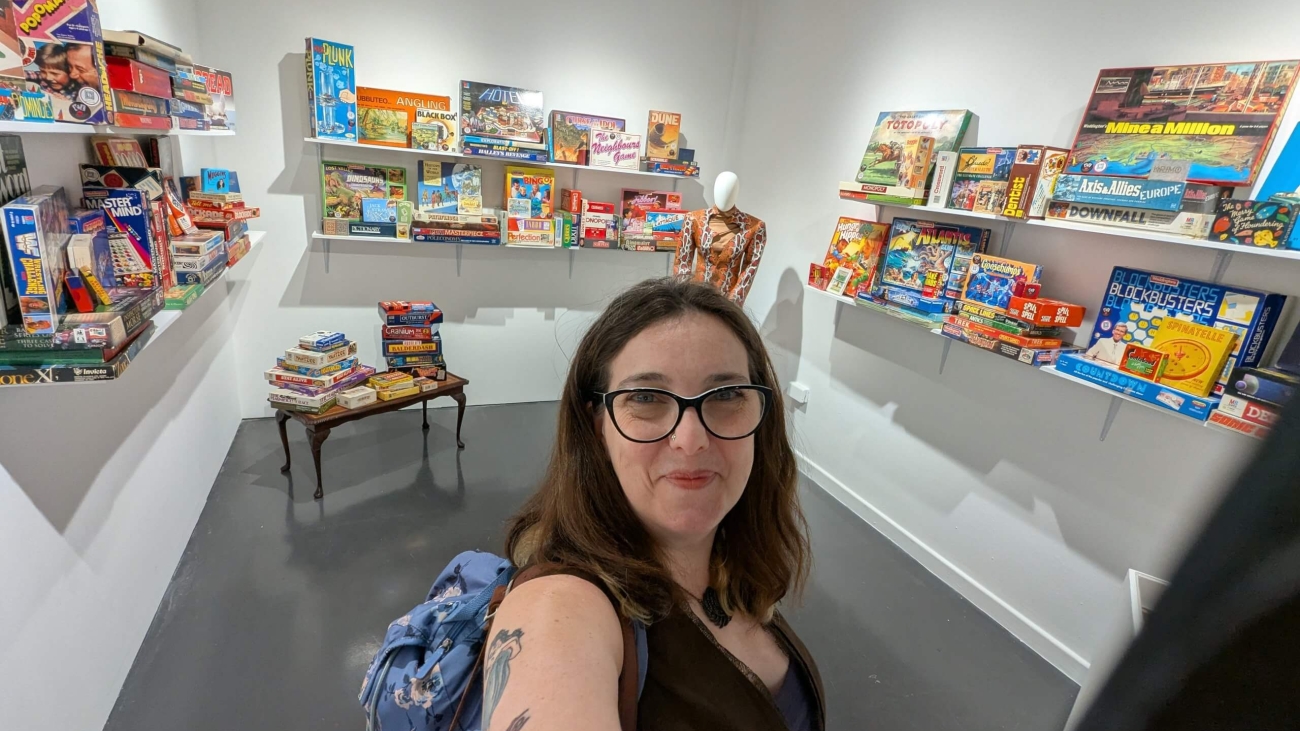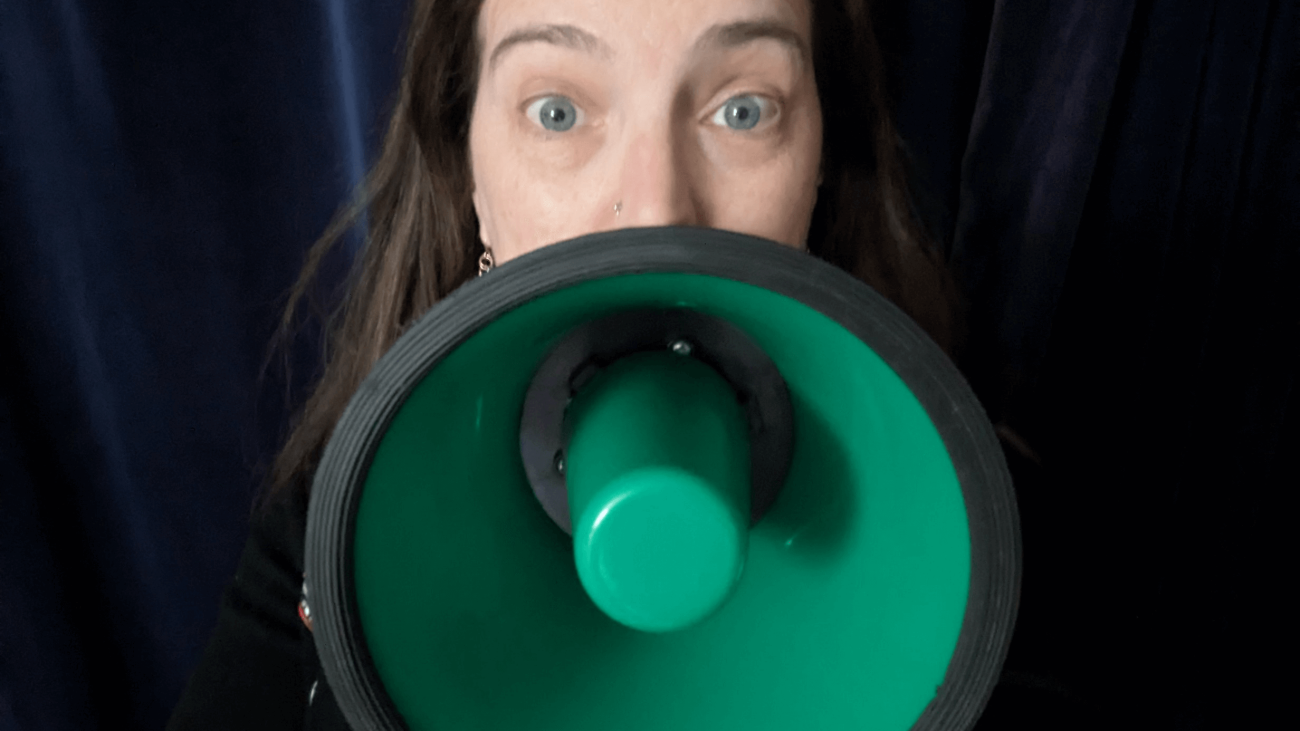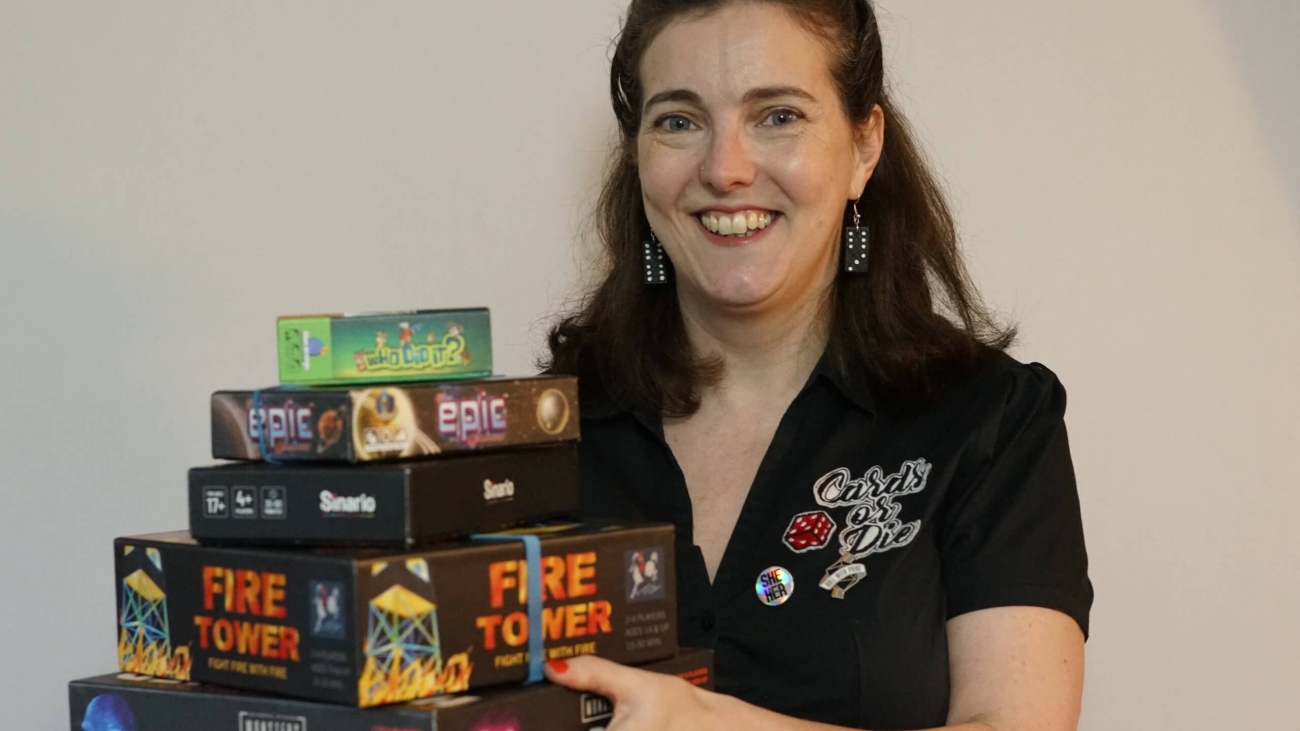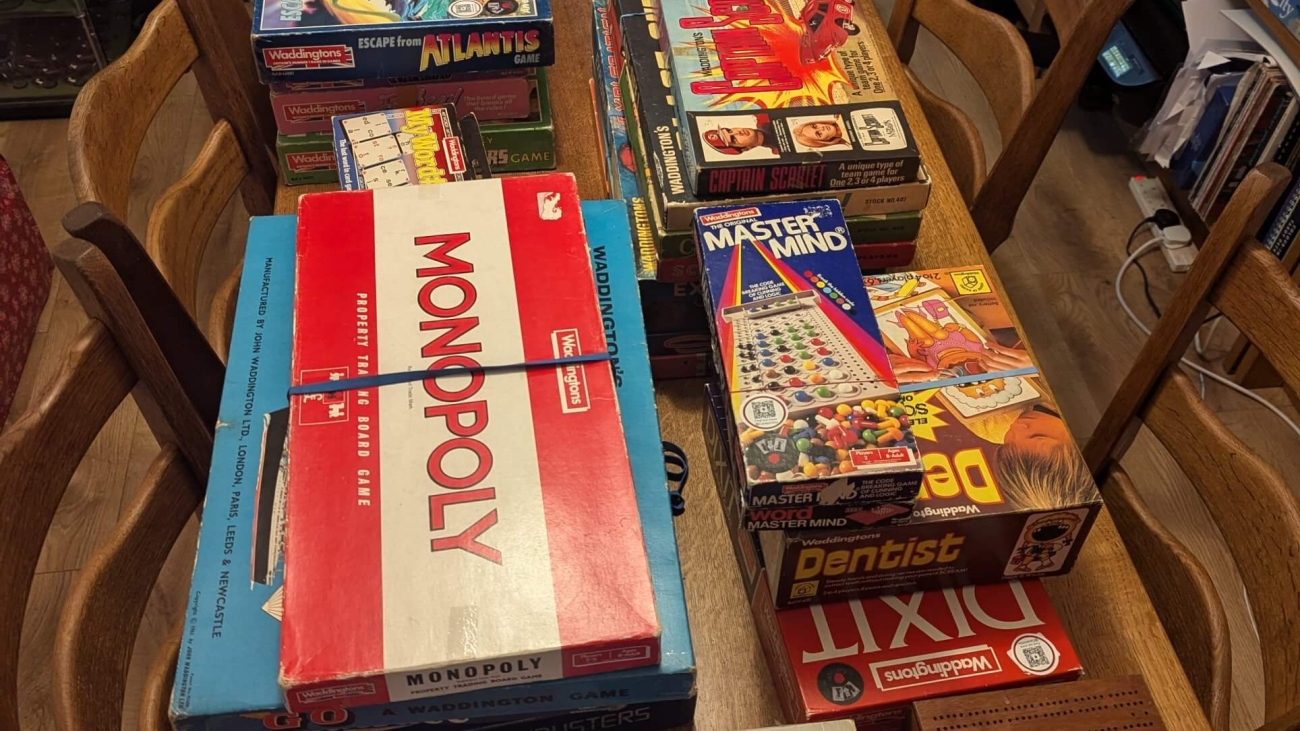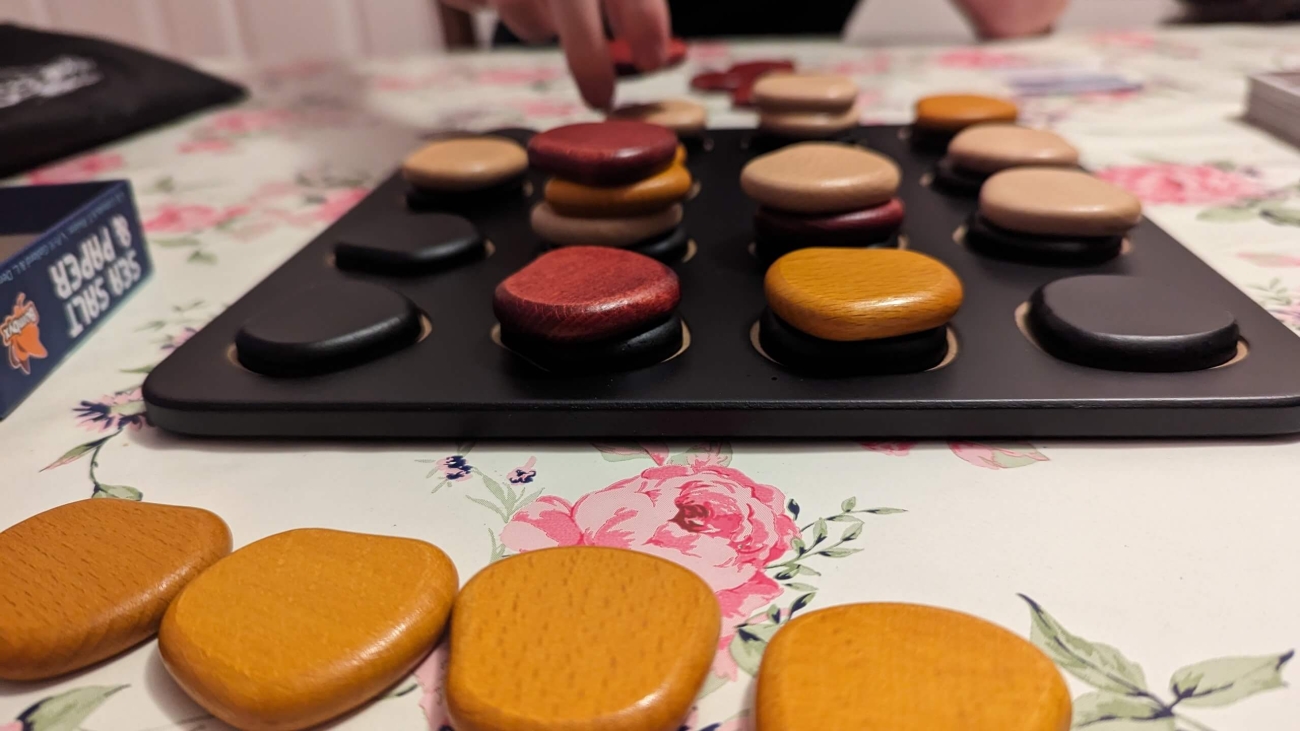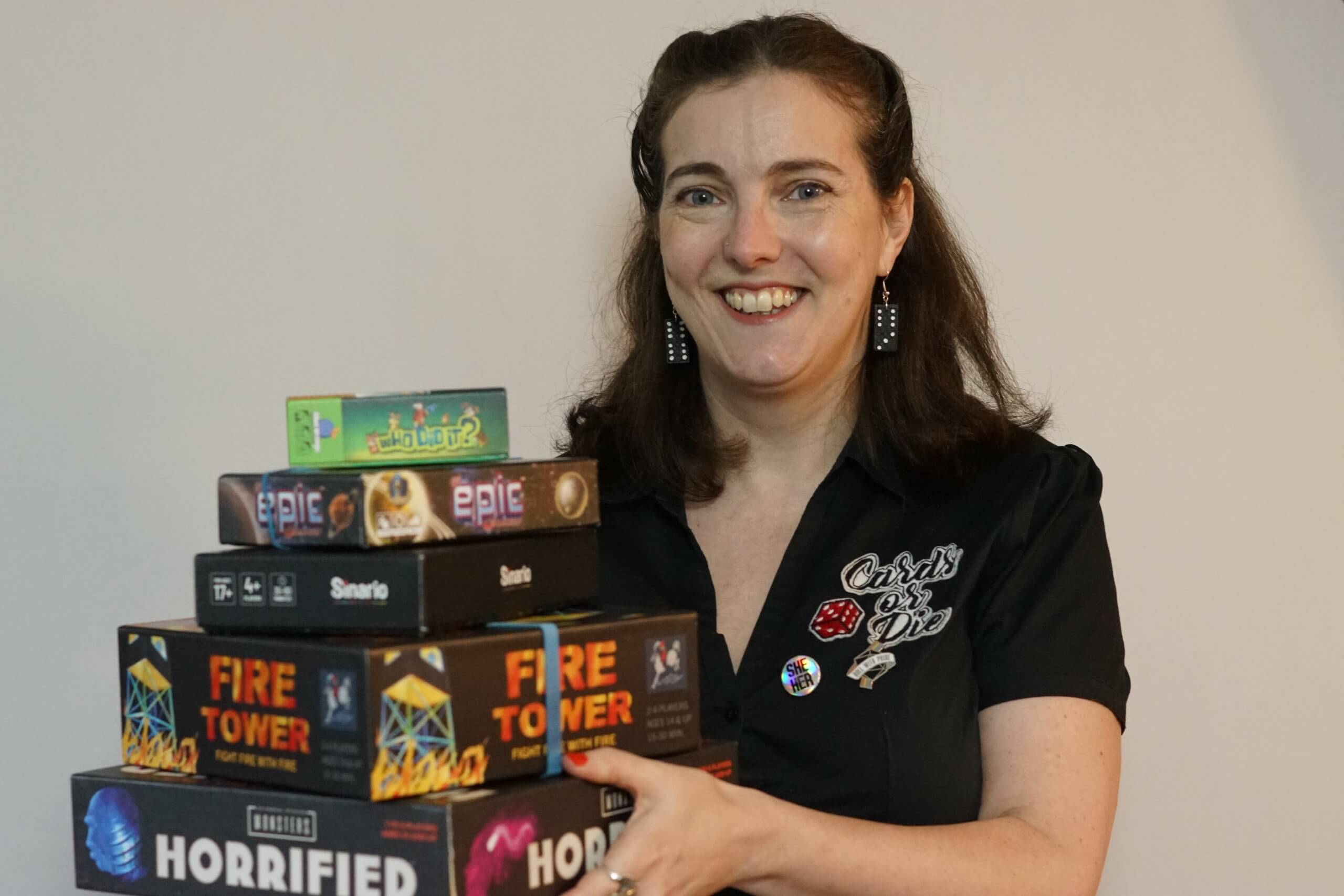As part of Artangel’s ‘Come as you really are’ exhibition I’m delighted to be collaborating with Barnsley Civic, to display 155 vintage games from the 1940s up to the 1990s – fairly horrified to have included the 90s but here we are! The exhibition opens on the 24th May and runs until 8th August 2025. It is part of a UK wide project led by Hetain Patel and Artangel working with 13 partner organisations including Barnsley Civic. In addition to Patel’s artworks such as Somerset Road (2024), a Ford Escort rugtufted in the pattern of the artist’s grandmother’s living room carpet, and Fiesta Transformer (2013); the exhibition will also showcase a wide variety of local people’s hobbies, things they have made, crafted, collected, modified – presenting an alternative portrait of the UK.
Please just stop it.
It is not without a sense of irony that my first pet peeve is those clickbaity negative posts. I really don’t get why in a hobby where there are small independent companies creating wonderful games…
Why do I take the boardgames to weddings?
Because I’ve been to weddings. I’ve hung around for hours in the daytime, trying not to drink too much, speculating on when the photographs will be done and, most importantly when the food will arrive? I’ve debated the wisdom of a nap between day do and evening do and mostly decided it’s not a good idea. I’ve regretted my shoe choice and had to abandon the dance floor in favour of chatting to people while worrying that I’ve forgotten crucial things they told me 6 hours ago. We’ve spent so long together that we’ve moved on to the stage of friendship where I have to check if I’ve already told them ‘this story’. And, of course because I’m a massive boardgame nerd!

Why boardgames?
The driving force of my business is to bring people together with boardgames. I want to connect people in real life using tactile and engaging games. There are two main things I wanted to offer – a break from our screens and an activity that you can attend comfortably on your own. But after I’d only been in business a short time, I realised how perfect they were for weddings.
For many of us boardgames are a direct link to our past – how lovely to reminisce with friends and relatives about games we used to play together. At weddings we often take time to reminisce – thinking back to when the couple met, how long we’ve known them and for families that can go back to childhood and the games they played together.
There is such an array of games available nowadays. I have games that take less than 5 minutes to teach, less than 5 minutes to play – games where you build or knock down, games where you strategise or just grab objects quickly, ones where you lie, ones where you guess what other people will say, competitive games, co-operative games where you work together to defeat the game. There really is something for every age, interest and mood.
There’s nothing like gales of laughter or the sight of elephants walking the plank to inspire conversation. At any of my events people will go over to other tables and ask what they are playing. It’s a simple way to spark conversation. As a recently diagnosed autistic person I’m realising that I’m better at this sort of chat than I am at small talk. I would far rather hear about what has made you laugh than how far you’ve travelled. I’m also aware that games reduce other social constricts too – no one expects eye contact when you are looking at a hand of cards or a board or both.
Sometimes it’s difficult to remember the details of weddings – we might remember the couple’s outfits or the band or the venue. But mostly in a general sense, we remember if we enjoyed it. I still remember a get together a few years back where we played Herd Mentality – a game where you are trying to give the same answer as everyone else. The question was ‘what is your favourite sandwich?’. I don’t need to tell you that it is not really about what your favourite is, but rather what you think most people will write down. One of our friends wrote down ‘Beetroot and Banana’. In the ensuing conversation she steadfastly maintained that, that is, in fact her favourite sandwich. My memory of us all howling laughing transports me to that room, sitting at that table, the things people said, people’s faces. It is all crystal clear and it still makes me smile. Boardgames are such good fun and still an unusual thing to have at a wedding – they really do create a memorable time.

Aren’t boardgames just for children?
Yes, boardgames are for children but not just for children. In my collection – most of the games (including ones ‘for’ children) are brilliant to play as an adult. Yes, some of them are silly but who decided that being a grown up meant we couldn’t have fun anymore. And games for children still need adult input anyway. For me the best games are where the whole family – all ages – can play and have fun together; where different generations can connect and use their different skills and knowledge together.

How does it work?
All you need to do is book in for a chat either on the phone or video call. You can also drop in to any of my public events to see how it all works. I’ll check if I’m available on the date. Then we can chat about what kinds of games you enjoy and what games your guests might enjoy. I have a massive spreadsheet with all my games on – you are welcome to choose each game you want me to bring or I can choose for you based on what we chat about. Or, somewhere in between – you choose some and I’ll top it up. We can also have a chat about the venue and the room I’ll be in. Then, that’s it! We book you in.
I’ll liaise with the venue about where I’ll be setting up, where I should unload and all that boring stuff that you don’t need to know. Then on the day I’ll rock up with a preposterous amount of games, set them out so people can easily see and access them. People can help themselves but I’m there to teach and recommend them to your guests and get them playing. Easy. Get in touch if you’d like to have a chat.
Boardgames and Me
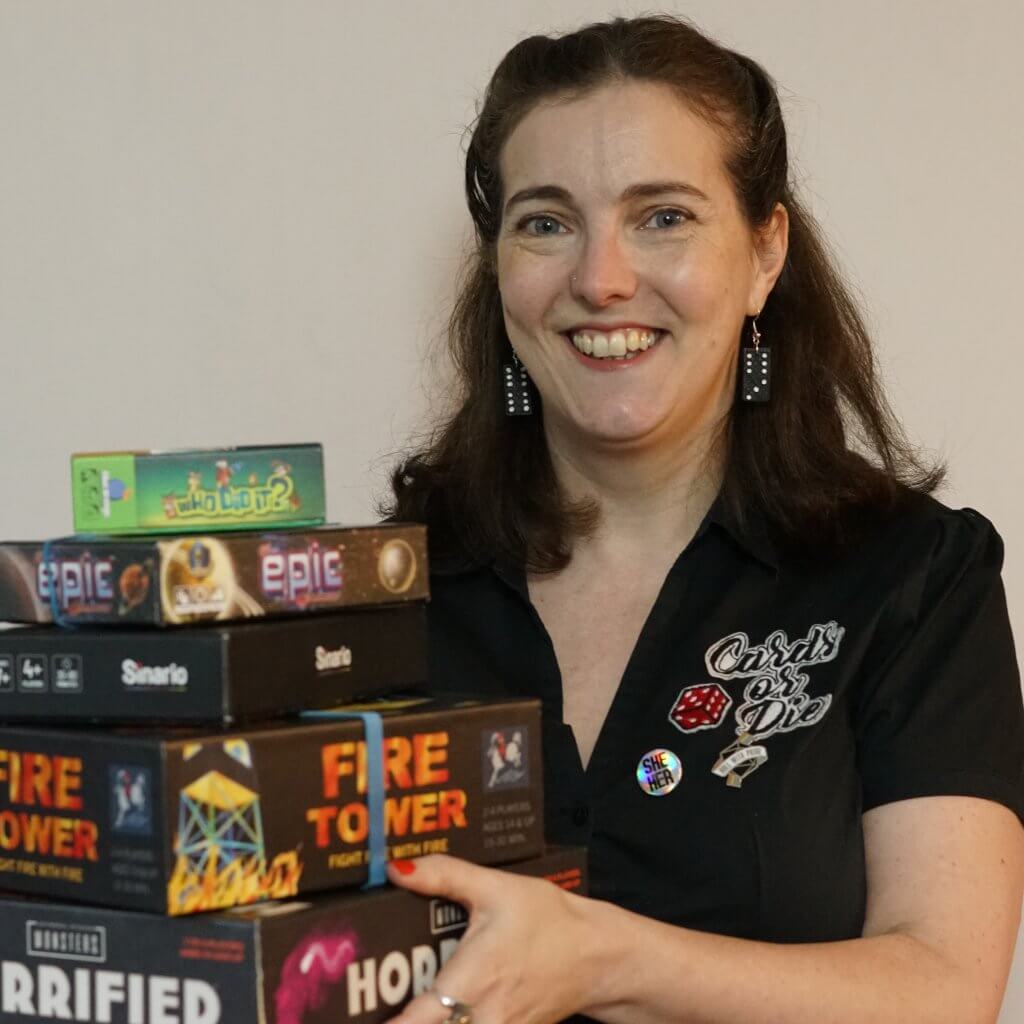
I know the rules to over 500 different boardgames.
After leaving teaching 7 years ago, I started my boardgames business – I take a selection of boardgames along to weddings, parties, pubs, team building, festivals and corporate socials and then I teach and recommend games to people. The initial aim was to get more people playing boardgames together. It soon became apparent that boardgames are a great tool for tackling social isolation.
Reading the rules is the most boring bit of playing games so I decided that I should learn all the rules, that way people can play straightaway. It also means no time is wasted arguing over how games are played or what the rules mean. I’ve described my brain as a dilapidated mind-palace. Only the boardgames room is still intact!
I grew up playing boardgames with my much older siblings (there’s a twelve year gap between me and my nearest sister). It was a way to spend time with them despite the age gap: a fun activity we could share. In the 80s we had about 5 games in the cupboard Connect 4, Guess Who, Kan-U-Go, Boggle and Escape from Atlantis. It was enough. Whereas now there are so many more titles available – I like to collect unusual ones that I think people might not know.
When we went on holiday we always took a pack of cards. We used to play card games in the caravan – gambling for pennies. If we played outside the caravan Mum made us take a box of counters she’d bought so that people wouldn’t think we were gambling. I still have that box of shiny red counters.
I did an event at an old people’s home and one of the staff pointed out two women who ‘never join in. They’ve got dementia. They just sit – they’re fine.’ I took them Connect 4 and set it up in front of them, they picked up the counters and took turns slotting them in. When it was full, they emptied it and took turns again. Neither of them spoke, they just played. It’s moments like that which convince me of the power of boardgames.
I realised that it wasn’t just me who had fond childhood memories of playing boardgames together. Part of my collection is retro and vintage games and people love reminiscing – they had the exact same copy or they always played it at their grandma’s.
Far from being a dying hobby, the boardgames industry is growing year on year. The global boardgames market estimated to be worth between $12 and $13 billion. The pandemic played its part in encouraging us to put down our phones and reconnect and that’s what boardgames enable us to do.
I get a lot of people coming on their own to my events. The prospect of going to an event on your own can be daunting. Because you are sharing an activity you have a ready-made topic of conversation, the requirement for eye contact is significantly reduced because it’s fine to listen and play while looking down at your hand of cards or the board. I’m always delighted when people come on their own to my events because I know how much it takes.
I absolutely love teaching people boardgames and listening to the laughter, the heated discussions, and seeing people connecting over a game. I’m so lucky to have been able to turn my hobby and my geeky ability to learn lots of rules into my job!
Monopoly and More: Waddingtons Board Games
As part of Heritage Week this year I ran an event celebrating all things Waddingtons. Waddingtons started life as a printers – initially focusing on printing theatre programmes. They moved onto playing cards and then boardgames. I have a collection of around 50 Waddingtons games and these are some of the ones we played on the night:
Waddingtons Playing Cards
These gorgeous card decks are both from 1933. The first one comes in a little book titled ‘Idle Moments’
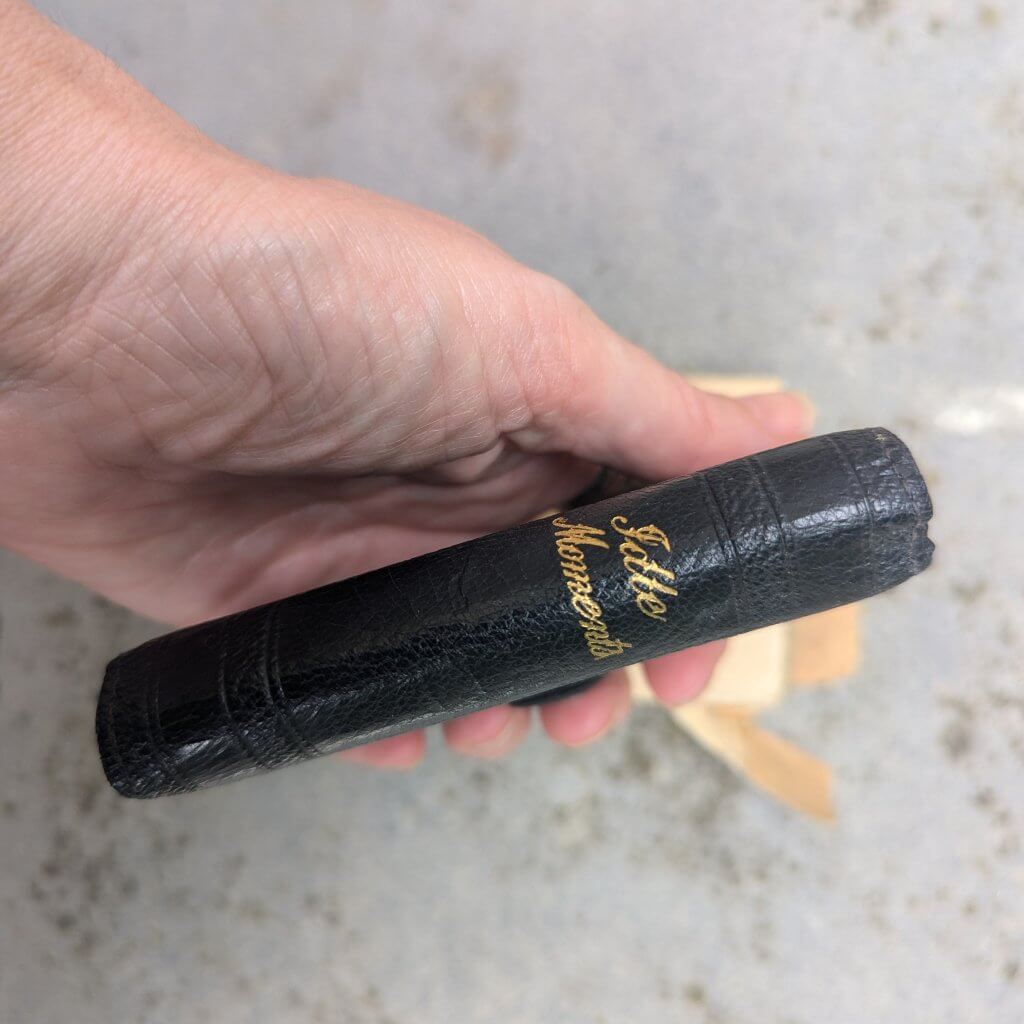
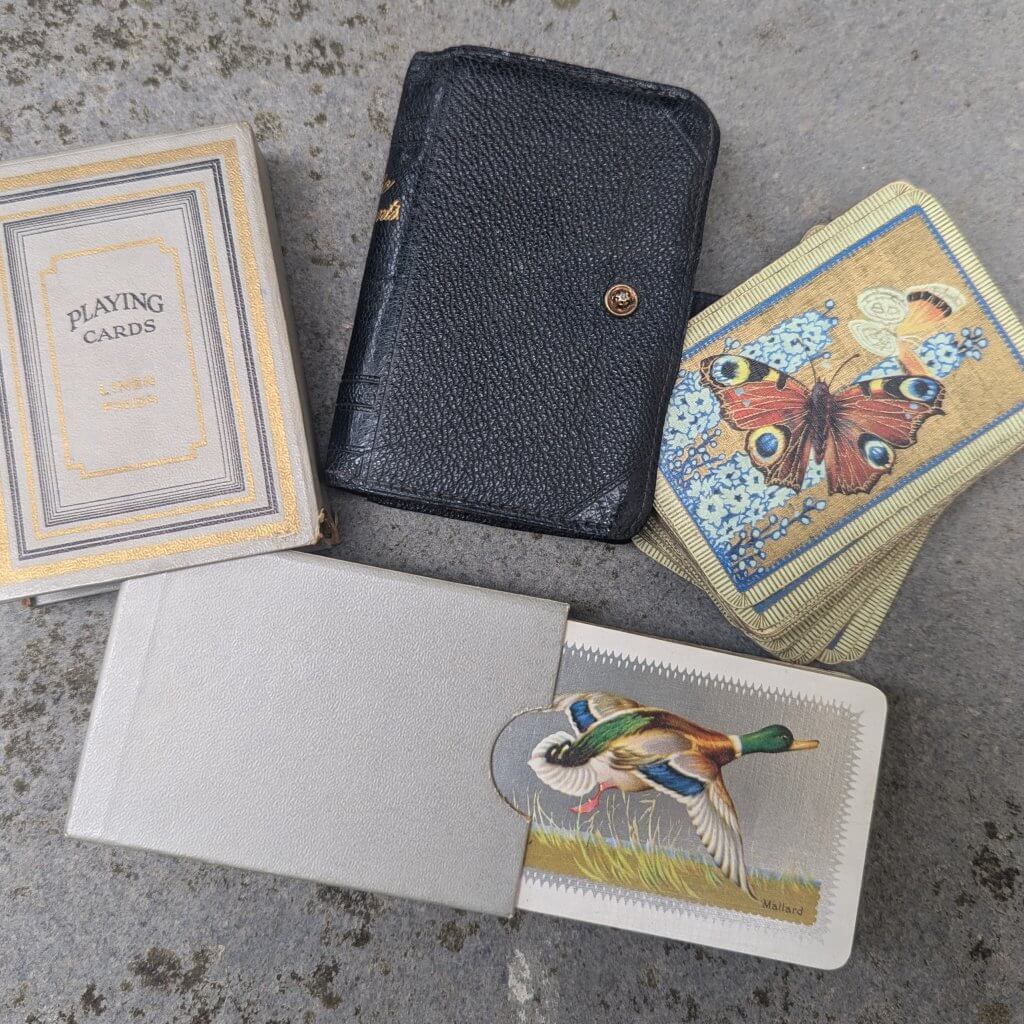

Cards were often associated with gambling which was frowned upon in many households. Storing them in this bible like case would be a way of hiding them from prying eyes. When I googled this case a similar one came up entitled ‘Let us play’ which is brilliant.
Both decks have an ornate ace of spades. When stamp duty on playing cards was introduced in the early 1700s, each printing house had to buy their Ace of Spades stamp from the government bearing the insignia of the printing house. The elaborate designs made forgeries more difficult. The tax remained in place until 1960. I always look for the Ace of Spades in vintage packs.
They are both linen finish and have clearly been well loved. A friend also found me a Waddingtons book of card games which is the perfect accompaniment to all my playing cards.
Waddingtons did also do specific games like Newmarket and Bezique where you get the cards and tokens needed for that game along with the rules.
Cluedo Super Sleuth
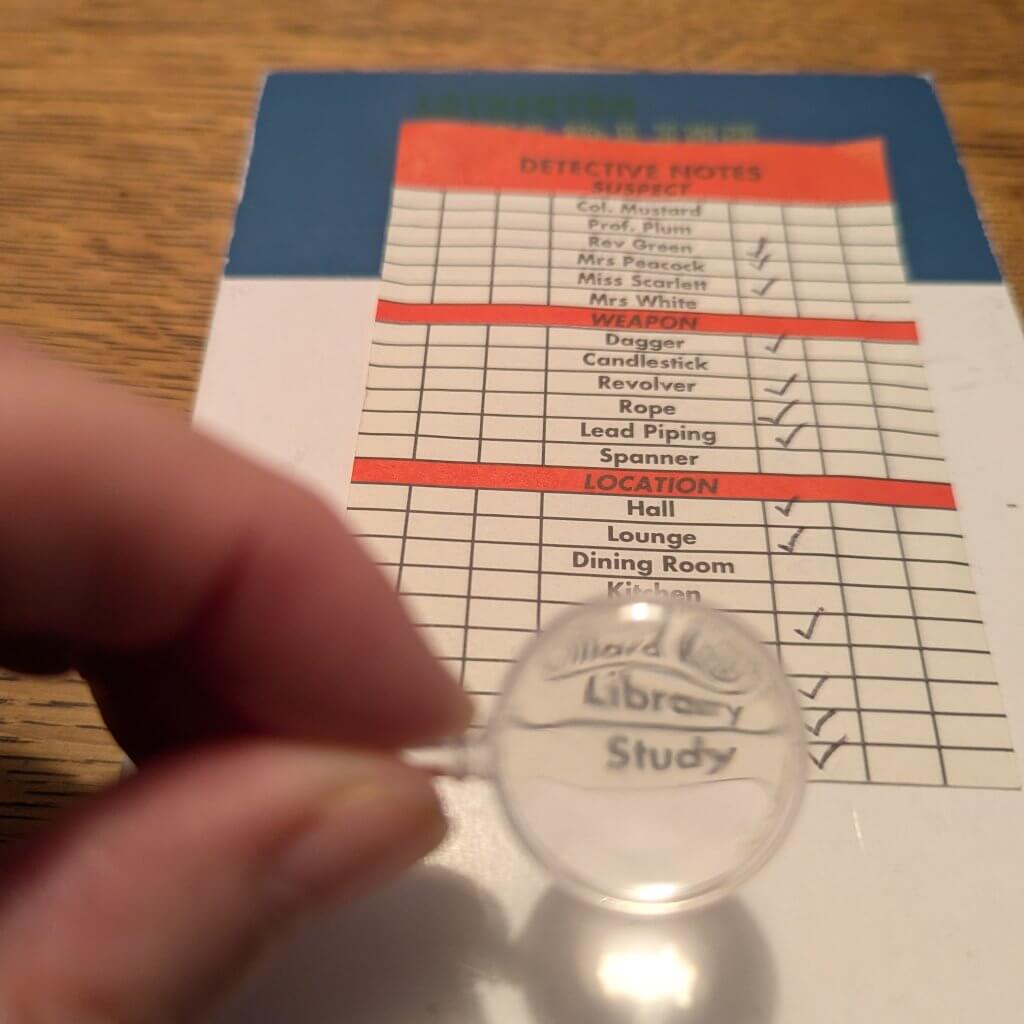


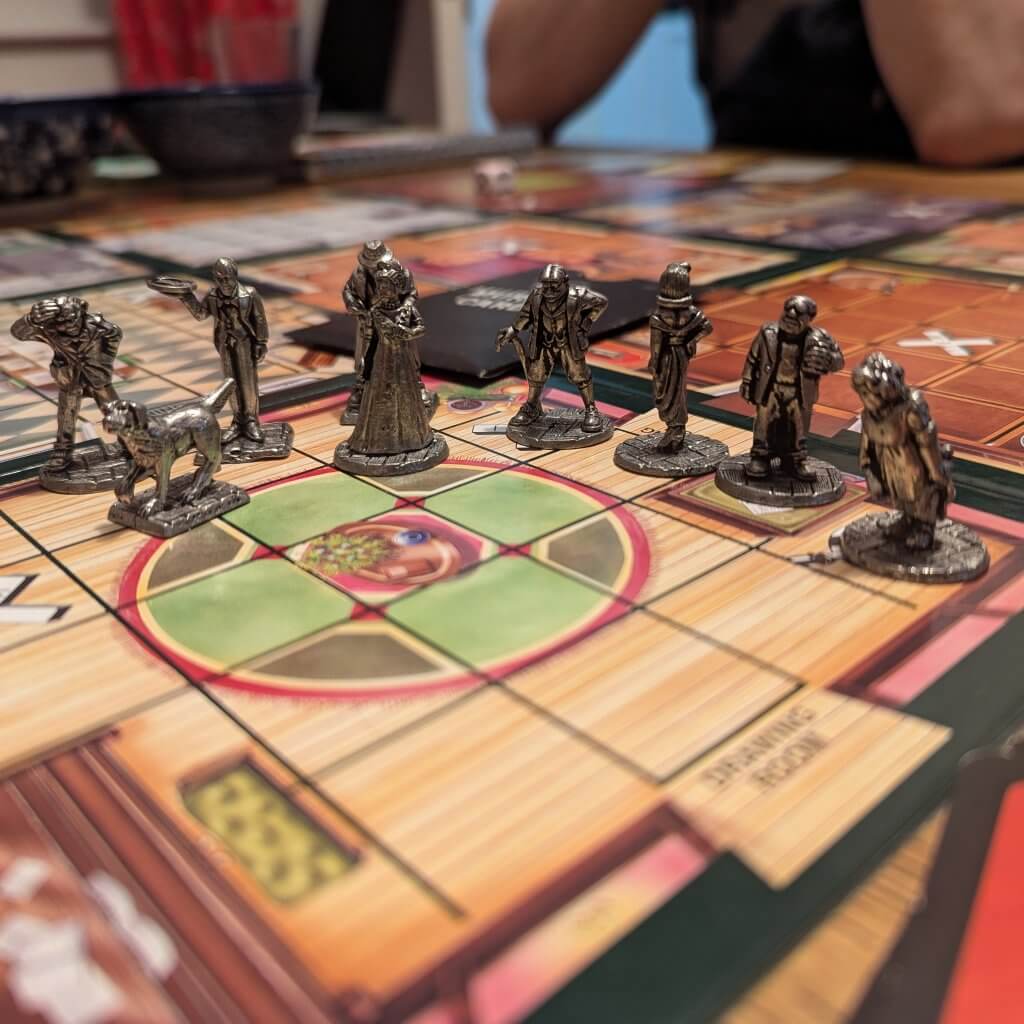
I found Cluedo Super Sleuth in a charity shop and it’s brilliant. Cluedo was one of Waddingtons best sellers and Cluedo Super Sleuth is very similar but it’s different enough. I’m confident that if you love Cluedo you’ll love this.
Before I tell you what I loved about it let’s take a moment to remember how Cluedo plays. You start by placing 3 cards in an evidence envelope: a murderer, a weapon and a location. Then, you deal out the rest of the cards to the players (meaning, despite what it says on the box, you need at least 3 players). You then roll dice and move from room to room asking one player at a time if they have a certain weapon, murderer or location in their hand. By a process of deduction and elimination you can work out what is in the envelope.
In no particular order here are the good bits:
- it plays 2-6 people
- cool mini figures
- you start with no cards so you can’t rule anything out until you’ve collected some clues. That means you don’t just move from room to room repetitively trying to rule things out.
- the rooms are revealed during the game and each room contains clues and item cards which you can use to help you investigate
- there are non-player characters: a dog, a butler and the detective. They can both help and hinder your investigations and can be used to obstruct other players.
- event cards which can be good or bad are included. Most of which allow you to move up to six spaces on that turn.
- the dice has a 3, 4, 5, 6, and two event symbols which means you move around the board much faster
- the magnifying glasses actually work
- it uses all the familiar characters, weapons and rooms as well as three additional rooms.
Goosebumps – Shrieks and Spiders Game
Don’t get me wrong, I’m as distressed as you that games from 1995 are in the vintage section of the charity shop but I loved the Goosebumps series so I bought it anyway. This is a good, silly, fun game with pictures from the popular stories. Each person flips over their top card and if anyone reveals a skeleton then you all grab a spider. But… there’s one less spider than there are players, so one person loses a token from their board. Lose all 4 and you’re out. It’s super quick to learn and play and it comes with plastic spiders – halloweentastic!
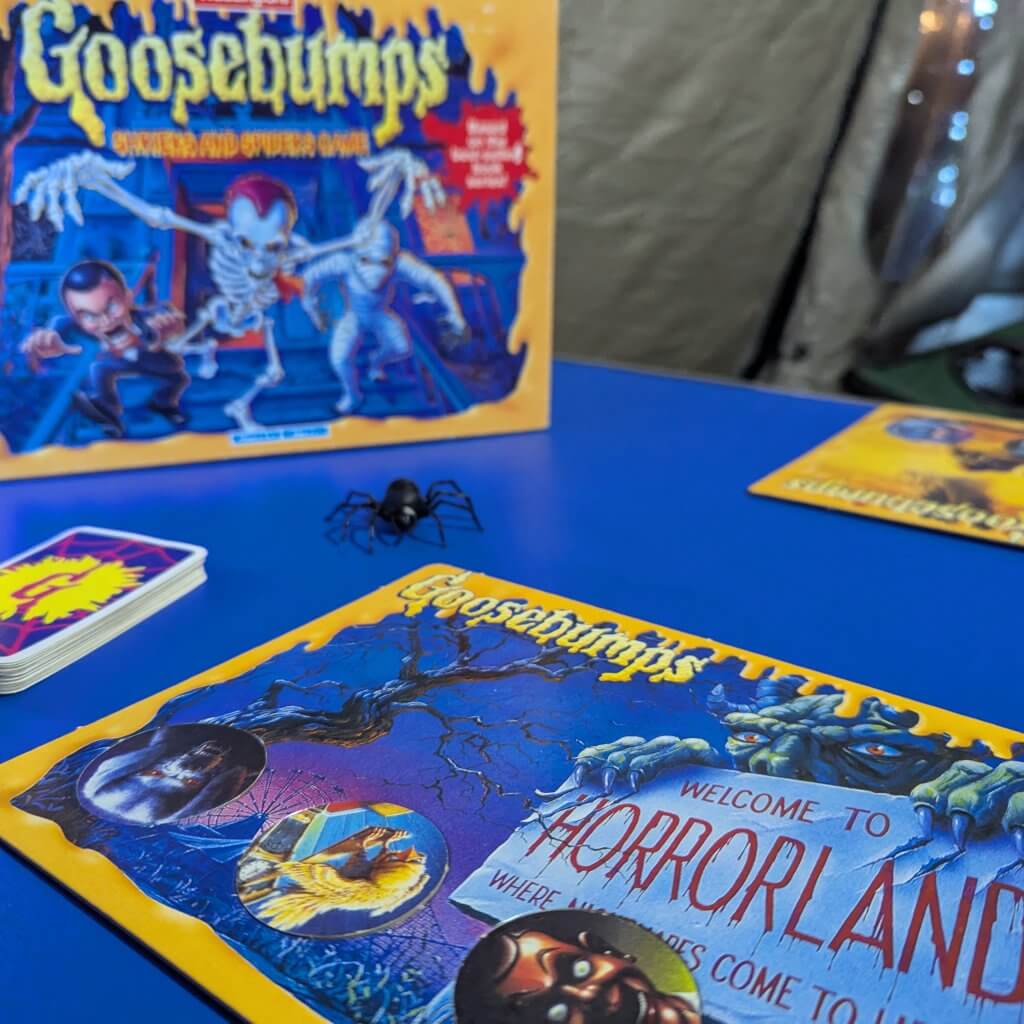
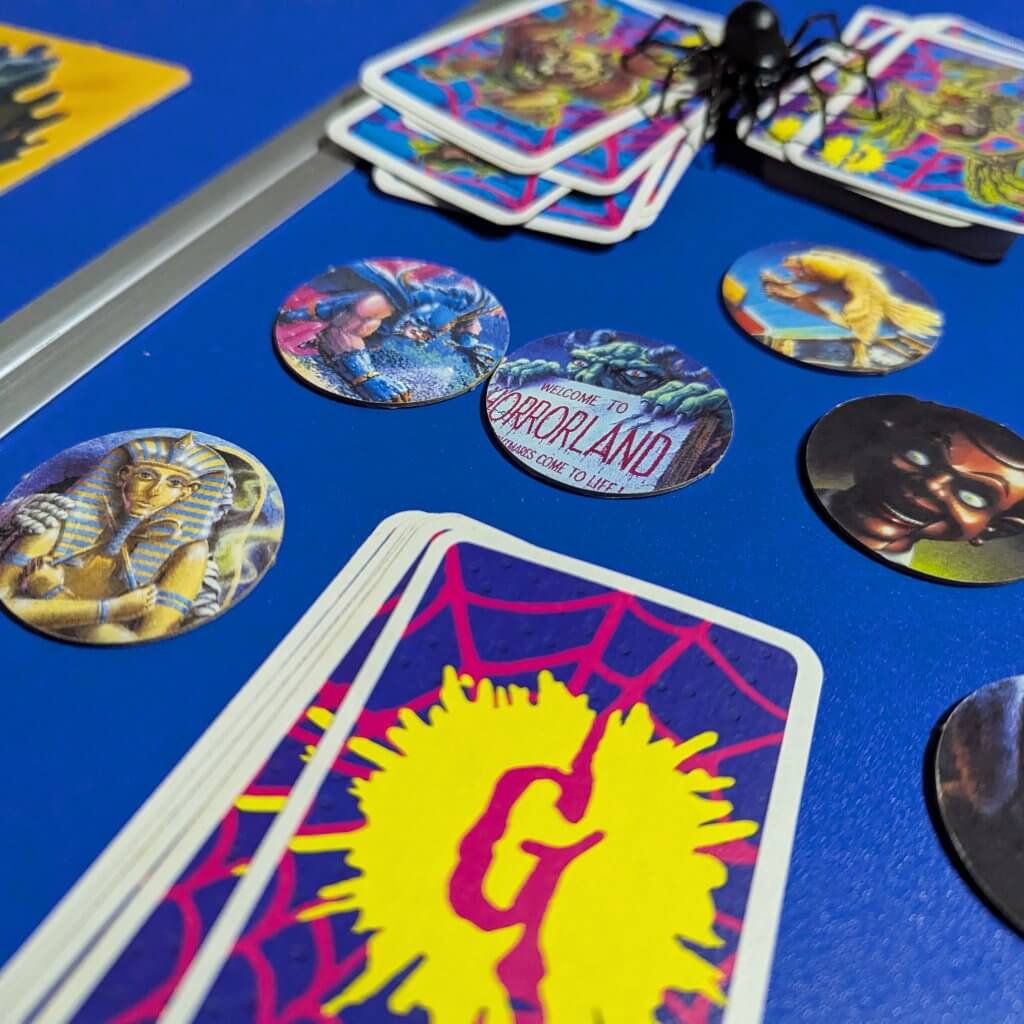
Scoop
Scoop by Waddingtons is from 1955. (Proper vintage!) Race to fill the front page of your newspaper and make sure your stories get approval from the Editor using the special telephone. There are so many things to love about this game:
- All the adverts are based on actual advertisements from the time
- The news stories are complete so one of the joys is reading the stories to everyone as you add them to your paper
- the telephone! once you have enough cards to collect a story you ‘ring’ the editor (slide the dial along and back revealing in the window whether you’ve been successful or not)
Things which are not so loveable is the arbitary payment for the person who fills their page first. This can massively skew the game. It basically means if you finish first you win while the actual win condition depends on you carefully selecting stories to get the most money. Despite that it is a lovely game and a proper slice of history.

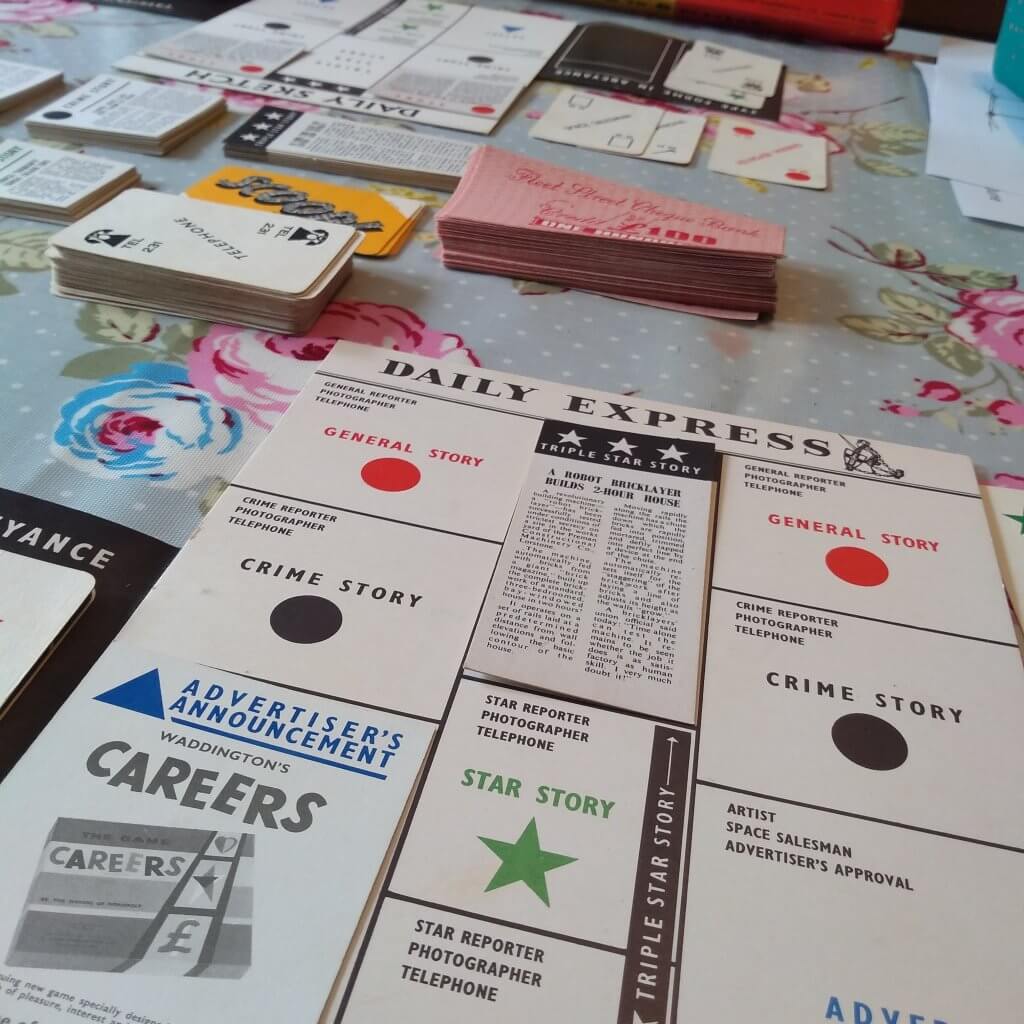
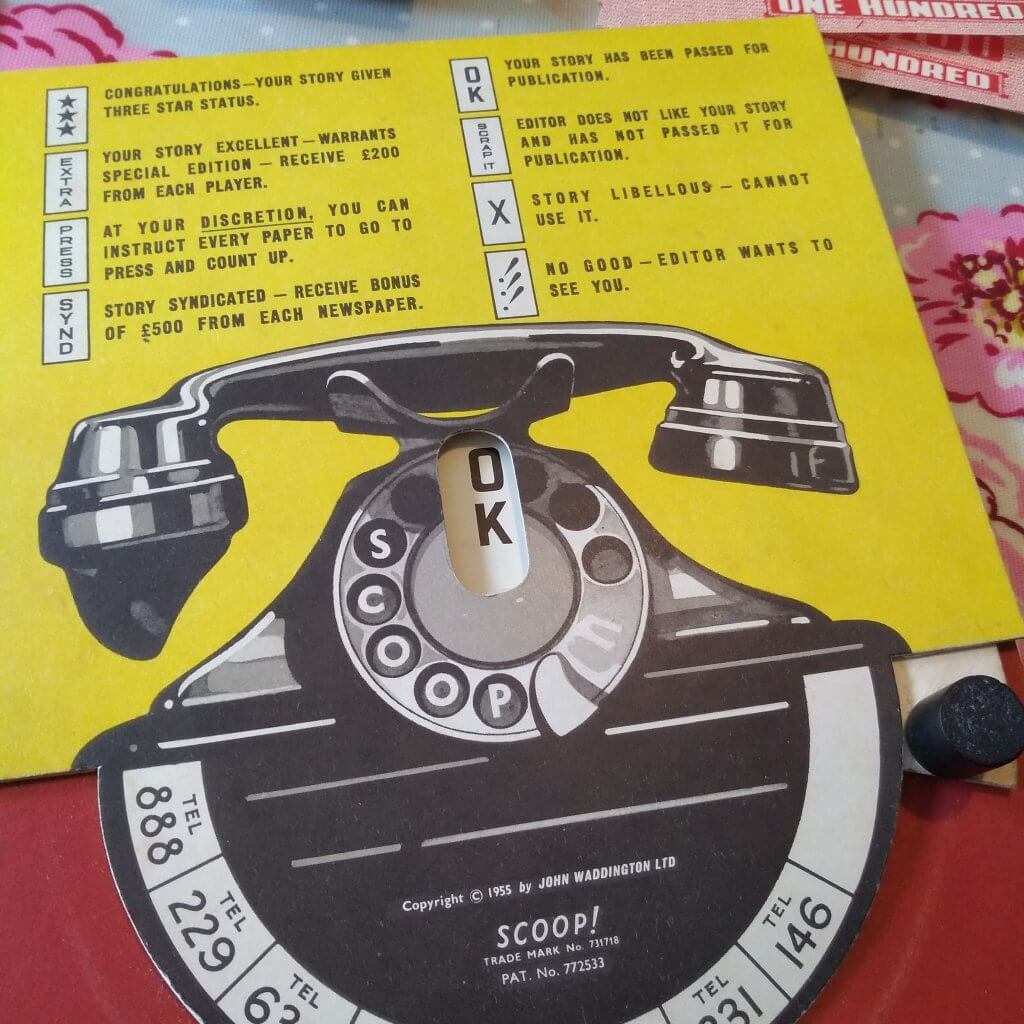
Mastermind (1984)
I had always thought Mastermind was by Invictus games. The copy I had as a child pictured a man who looked a bit like Magnus Magnerson in a black swivel ‘Mastermind’ chair with an attractive woman draped around him. This led me to have completely different expectations of the game- assuming it was a really difficult quiz game. The Waddingtons box cover was much clearer (and less sexist which is always a bonus) showing the game – the multi coloured pegs to make a pattern with and the board. If you have a moment to google Grand Mastermind by Invicta that’s got even more entertaining box art!
To play mastermind, one player makes a pattern with the pegs and hides it behind the screen. The other player then places coloured pegs into the board at the far end. The small black and white pegs are used to indicate only whether a correct colour has been used in the right or wrong place. Using that information the player must deduce over as few turns as possible the combination hidden behind the screen.
It’s basically wordle. There is a word version of it which is much easier than the colour version – I find it too easy given the time it takes to sort and set up.
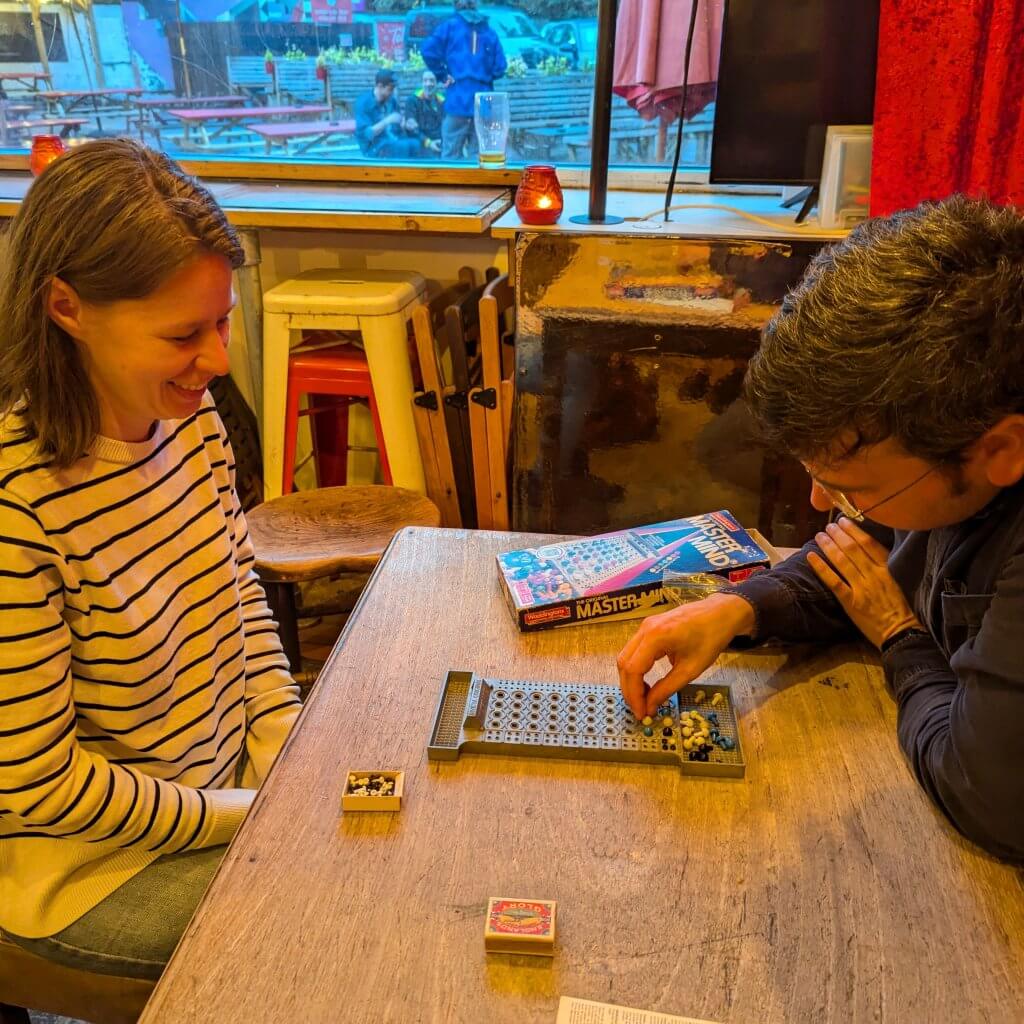
Captain Scarlet (1967)
Captain Scarlet and the Mysterons describes itself as a co-operative game which I was quite excited about as I felt that co-operative games where you work together to solve a puzzle or defeat a common foe were a modern concept.
In the first half of the game you all make your way across Europe in your little cars passing through famous cities like Aberdeen, Maryport, Grimsby and Cardigan Bay (some of which are in the right place on the map). Every so often you land on a space which requires you to read a Mysteron card which invariably impedes your journey. Despite the fact this seems like it should be a race – it isn’t. There is no mention of a win condition nor is there any suggestion of how we are working together to achieve this aim.
But then, once you’ve reached that destination – there’s a second part where you have to get to a different place but this time according to the rules you both do and don’t have to follow a route detailed on the route card you are given. I’m still hazy on the co-operative element and the purpose of all this driving about. It is hilariously bad.
For a long time I had this game with no rules and honestly, part of me thinks it was better that way!
But still, I love the weird quirky map and the odd mysterons cards. House rule it to within an inch of its existence and you might even have a fun game.
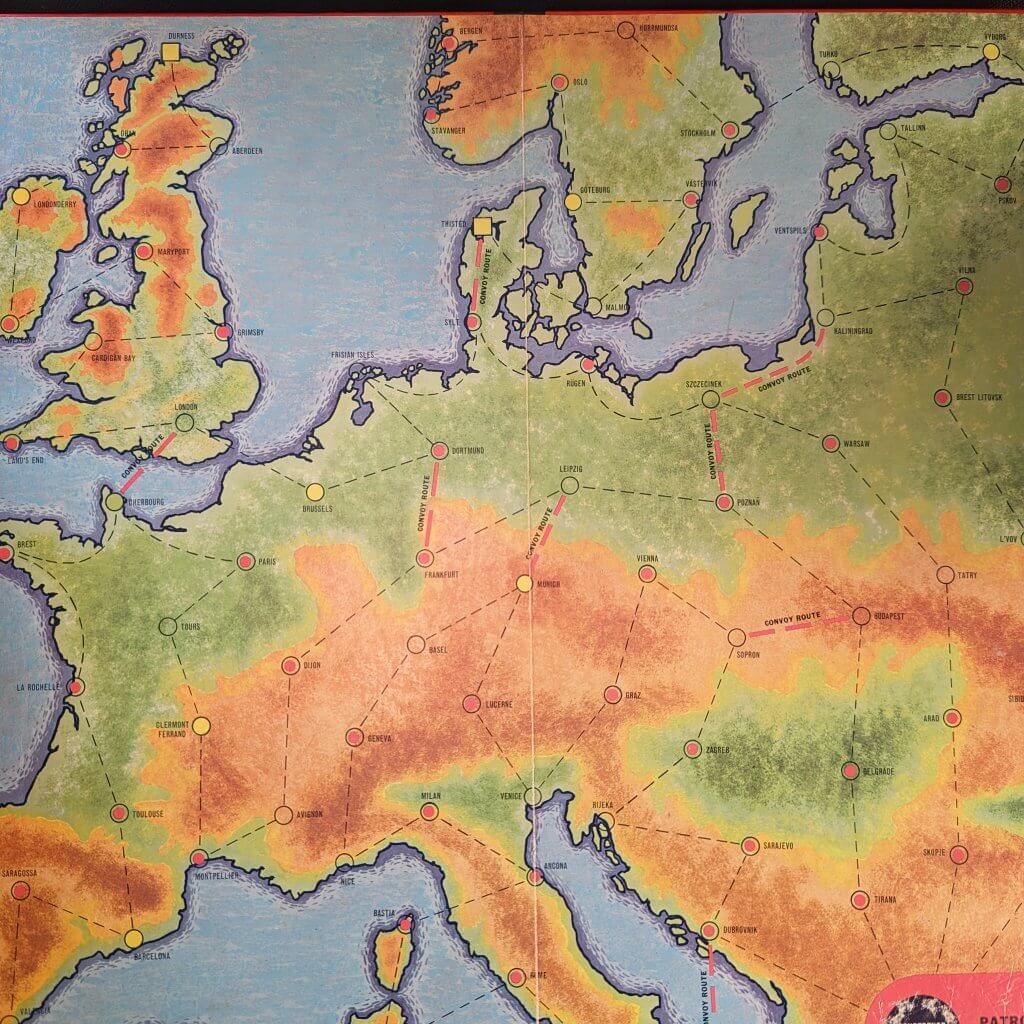


Pit (1909)
My version of Pit is a Parker Bros game, Waddingtons also produced a version of it. Waddingtons and Parker Bros worked closely together. It was Parker Bros who introduced Waddingtons to Monopoly. My copy is from the late 70s (you can tell by it’s gorgeous brown and orange colour scheme) but the game itself has been around a lot longer – it originated in 1909. Based on the trading pit, players shout what they wish to trade and frenetically swap cards until they can corner the market on their chosen crop by collecting a full set. This version comes with a bell which signals the opening and closing of trading. You can also play with the bear and the bull; a wild card and a penalty card.
You can play round by round where you get a winner each time or you can use the scores on the cards to play over a series of rounds. Playing over a series of rounds really ups the ante as you will want to collect higher value cards even if they aren’t the cards in your starting hand.
Either way, there’s a reason you can still buy copies of it today – it’s a fast, fun, noisy game – great for larger groups.

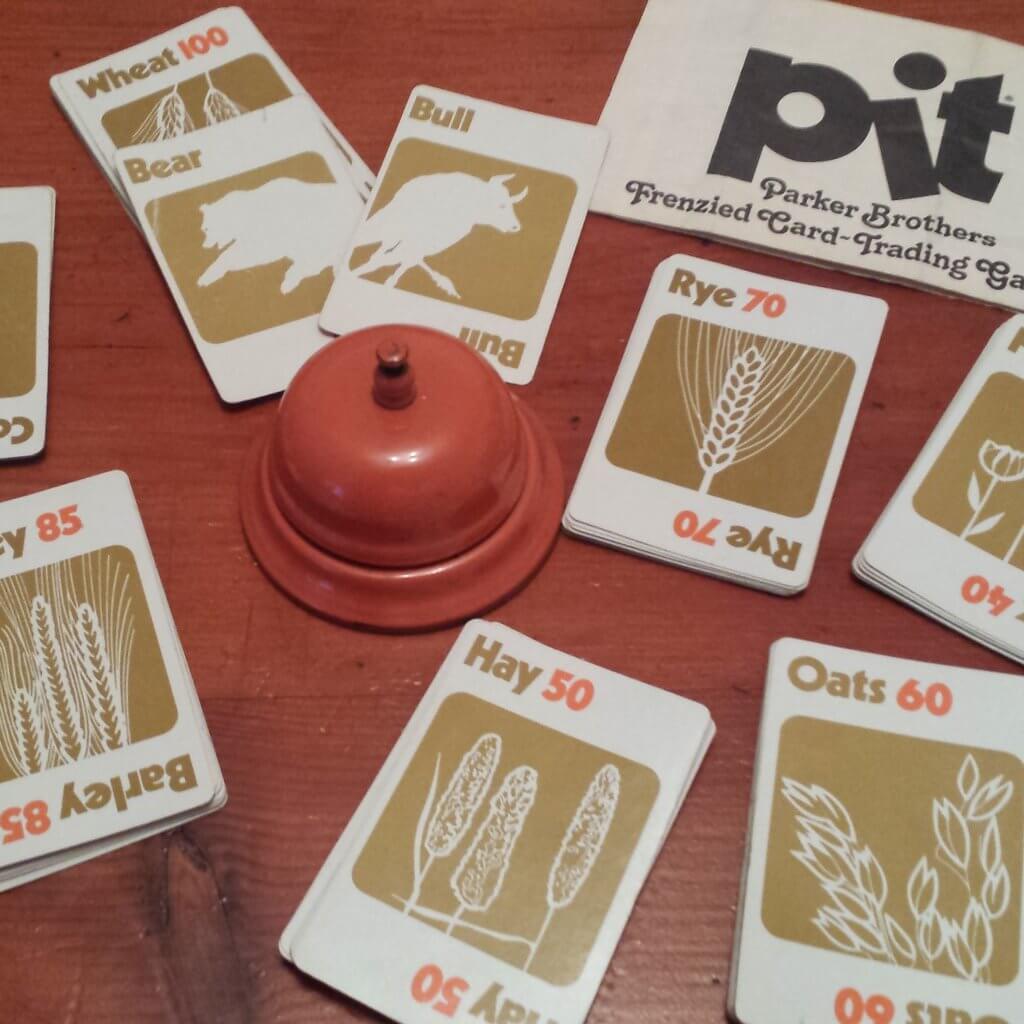
Even in the last few weeks I’ve added some more Waddingtons games to my collection. They produced so many brilliant and iconic games over the years. I’d love more opportunities to bring them along to events – get in touch if you’d like to play any at one of my events.
What is Mindfulness?
What is Mindfulness? Mind defines ‘Mindfulness’ as: ‘a technique you can learn which involves noticing what’s happening in the present moment, without judgement. You might take notice and be aware of your mind, body or surroundings.’ That’s it. There is no specific activity you have to do – I love yoga, I use guided meditation from time to time, I dance and I try to sit in the garden and drink a cup of tea most days. And, of course I play boardgames. It doesn’t have to cost the earth and mindfulness looks different for everyone. I thought I’d tell you a bit about what it looks like for me in terms of boardgames. I’d love to hear what it looks like for you.
